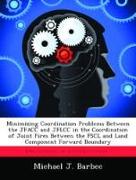- Start
- Minimizing Coordination Problems Between the Jfacc and Jflcc in the Coordination of Joint Fires Between the Fscl and Land Component Forward Boundary
Minimizing Coordination Problems Between the Jfacc and Jflcc in the Coordination of Joint Fires Between the Fscl and Land Component Forward Boundary
Angebote / Angebote:
This thesis discusses the coordination problems which arise between the Joint Force Air Component Commander (JFACC) and the Joint Force Land Component Commander (JFLCC) when trying to employ fires between the fire support coordination line (FSCL) and the land component forward boundary. This is due to the JFLCC being the supported commander within this area of the battlefield, though the JFACC actually has the preponderance of capabilities for employing fires. Joint doctrine explicitly states that the FSCL is a permissive measure. However, coordination with other affected commanders is required when employing fires to prevent duplication of targets, as well as fratricide. Joint doctrine provides great latitude to joint force commanders to establish command and control relationships and employ appropriate coordination measures to ensure effective coordination. This thesis concludes that the FSCL must be treated as a permissive measure, just as defined in joint doctrine. Though the JFLCC is the supported commander, the JFACC should be appointed the Coordinating Authority for fires beyond the FSCL due to his capabilities to both acquire targets and employ fires. The JFLCC best retains his influence in shaping the battlefield beyond the FSCL by providing the JFACC mission-type orders, in addition to standard target nominations.
Folgt in ca. 15 Arbeitstagen

